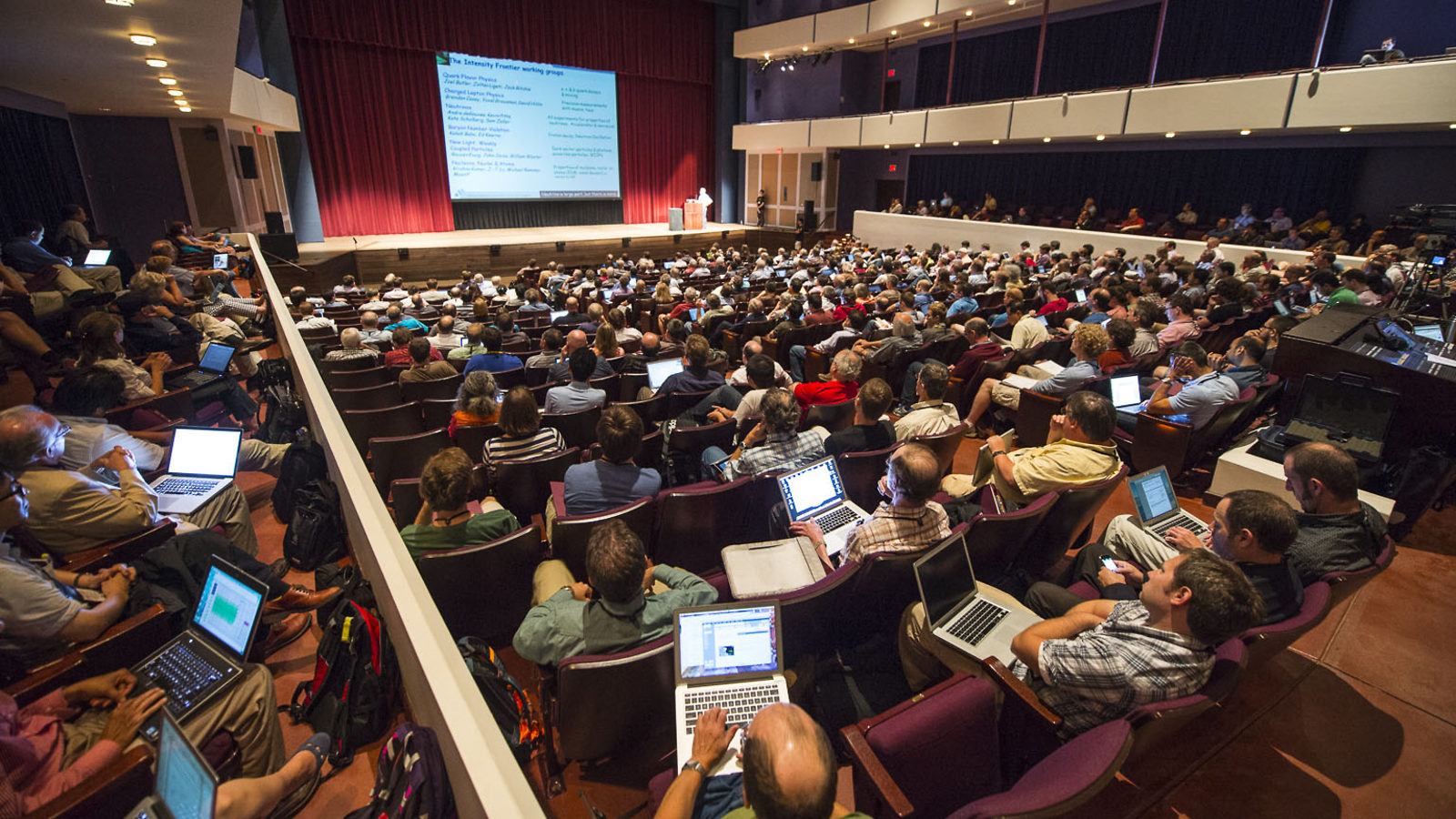Today, more than 600 particle physicists from nearly 100 universities and laboratories came together on the University of Minnesota's Minneapolis campus. Over the next nine days, this diverse group of experts—who study the most fundamental components of our universe: energy, matter, space and time—will dream big. They will enumerate the field's most pressing scientific questions and contemplate the experiments needed to answer them.
“Particle physics answers some of the largest, most fundamental questions in all of science,” said Michael Peskin, one of the conveners of the meeting, which was organized by the American Physical Society's Division of Particles and Fields. “By coming together to discuss these questions from multiple perspectives and techniques, we can identify opportunities for our field.”
Held once or twice a decade, this grassroots planning exercise—within the particle physics community known as the “Snowmass community summer study,” after the Colorado location of previous summer studies—will lead to a roughly 300-page document that assesses and summarizes particle physics' opportunities for discoveries.
“We all bring different, reinforcing reasons why high-energy physics is important and should be supported,” said Steve Ritz, a meeting convener. “There’s clear evidence that there’s more to discover; we have profound questions to answer.”
Along with input from the US Department of Energy and the National Science Foundation, the ideas that spring from the Snowmass process will inform the US Particle Physics Project Prioritization Panel (P5) as it creates a new strategic plan for future US high-energy physics investments.
“The P5 process takes the science vision of the community and turns it into a plan that’s feasible and executable over a 10- to 20-year timescale,” said Jim Siegrist, director of the Office of High Energy Physics in the Department of Energy's Office of Science.
The strategic plan will offer a coherent path forward, building a strong position from which the US high-energy physics community, working with the international community, can answer grand scientific questions and improve our understanding of nature.



